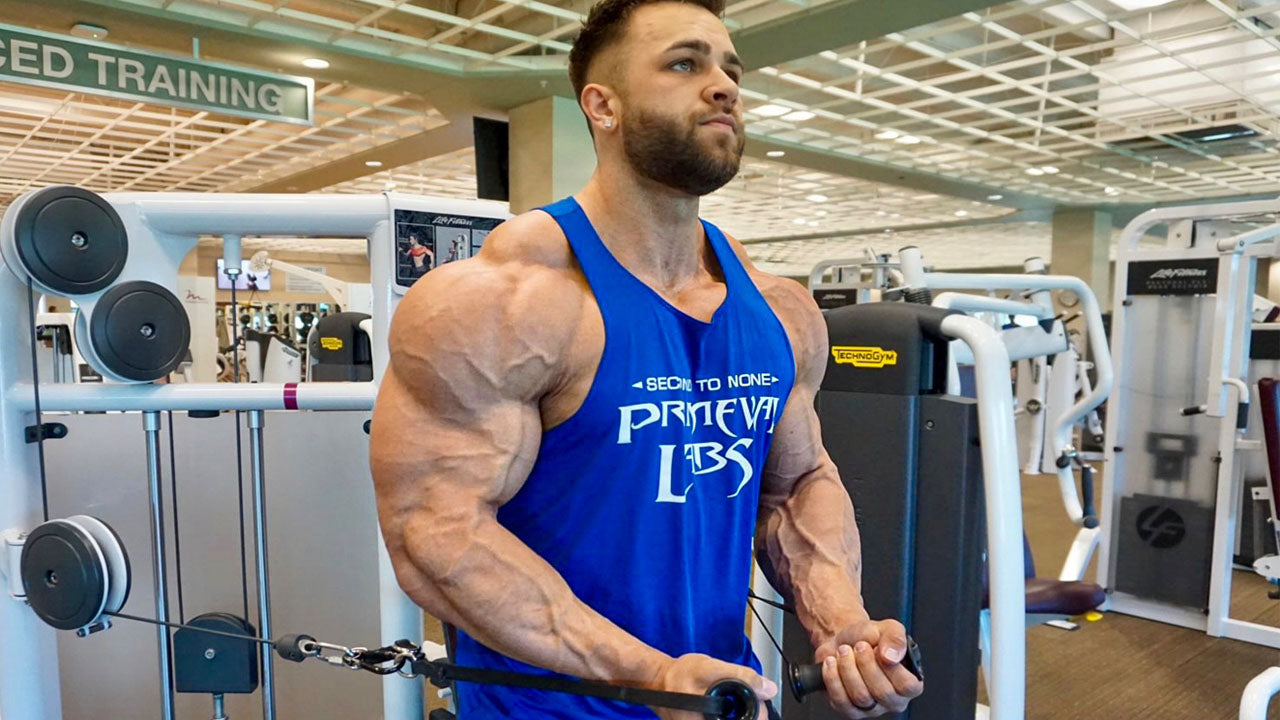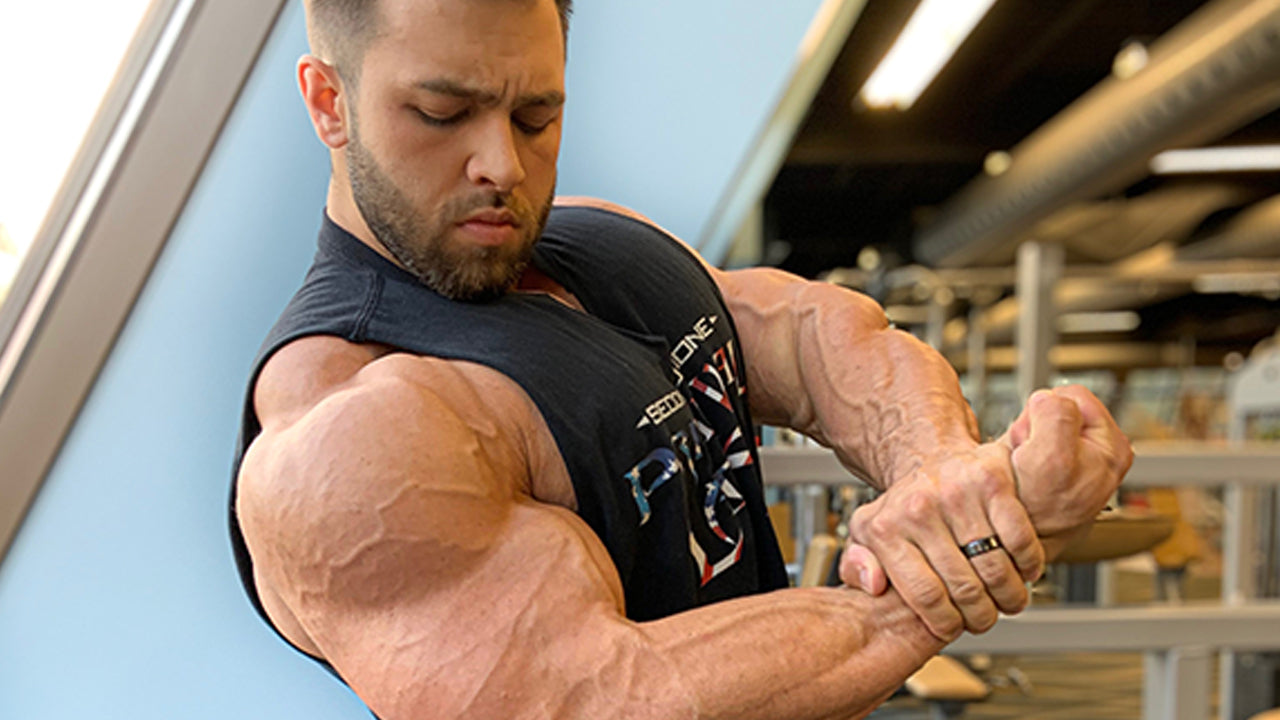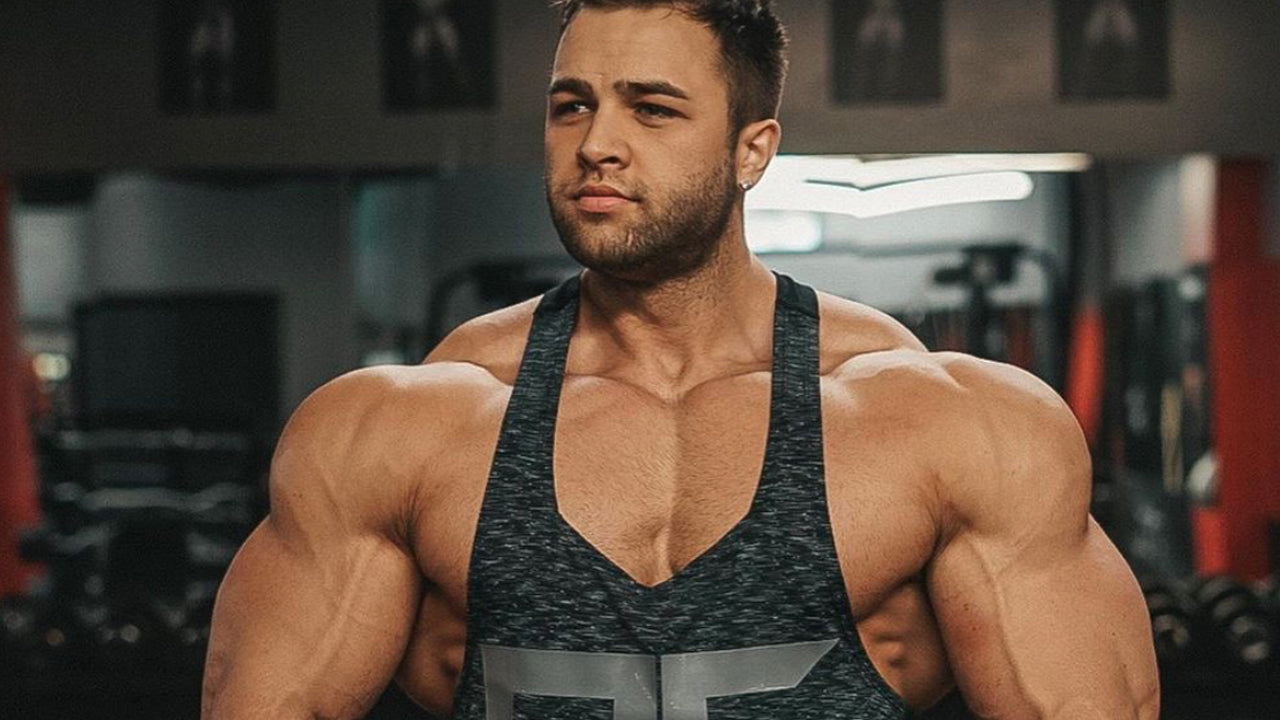Ask any lifter what muscle group they enjoy training, and to a man or woman, the guys will likely say chest or arms and the girls will likely say legs, or more specifically glutes.
Few (if any) lifters will say back, and even fewer will say shoulders or delts.
Yet, when you step back and think about it, the shoulders are the unsung all-stars of the upper body.
They’re the vital link between every upper body movement as they’ve involved in both pushing and pulling exercises.
Furthermore, the shoulders also play a significant role in the appearance (or lack thereof) of your V-taper, meaning if you prioritize shoulder training (and keep your diet in check) you’ll have an enviable v-taper, and if you don’t...well...good luck looking good with or without a shirt on.
That’s why we’ve developed the following shoulder workouts.
Below, we’ve got three unique shoulder workouts to help build muscle, gain strength, and help you get a sick v-taper.
But before we get there, let’s go over some important points that you should consider when performing your shoulder workouts.
Fuel Tough Workouts
4 Keys to Killer Shoulder Workouts
Use a Full Range of Motion
If there’s one thing that needs to be stressed (that really shouldn’t have to be) is that you need to use a full range of motion when lifting. Both lifters and athletes alike have a tendency to use a short, incomplete, and choppy ranges of motion when performing their exercises. Most often this is due to trying to impress others in the gym.
However, what this is really doing is short-changing your ability to build as much muscle as possible as quickly as possible.
When you perform an exercise through its full range of motion, you make the movement more difficult which (usually) means that you cannot lift as much weight as your delicate little ego would like.
But, what you trade off in weight, you’ll make up for in time under tension and muscle building “bang” per rep.
The delts are a small muscle group comparatively, which means you should be trying to maximize the range of motion that you use, not shortening it. Therefore, when performing any shoulder exercise, even lateral raises, use as complete of a range of motion as possible on the exercise as your body will allow.
Train All THREE Heads of the Shoulder
Very often with shoulder training lifters prioritize movements that emphasize the front and side delts (overhead presses, laterals, front raises, etc) much to the dismay of the quite possibly the most important of the three heads of the delts -- the rear delt.
Properly training the rear delts is absolutely crucial to strong, healthy, and well-developed shoulders. Since most lifters only focus on the front and side delts, this creates a pretty significant imbalance between the front and back muscles of the shoulder.
Further accentuating the problem is that most lifters also tend to perform too much benching and not enough back training, which can lead to weak rear delts, future shoulder problems like rotator cuff tears, impingement, etc, and not to mention horrific posture.
The rear delts serve as important stabilizers for your shoulders, which means that if you want healthy, strong shoulders, then you need to prioritize rear delt training!
Check Your Grip
We all have a tendency to grab hold the bar with a crushing grip especially for upper body moves.
And, while it’s important to not get loosey-goosey with your grip (and thereby risk dropping it on your head), you don’t want to have the weight clenched so hard that your hand is mistaken for a vice grip.
The reason for this is that using too recruits the muscles of the forearm which shifts the focus away from the muscles you’re actually trying to work.
The two most obvious exercises where this tends to occur for lifters is side lateral raises and dumbbell curls.
If you find that you’re not really feeling your delts doing much work during the lateral raise, try lightening up on your grip, using a false grip, or even a somewhat limp wrist, which further de-emphasizes the contribution of the forearm in the movement
At the same time, it’s also important that you’re not using too loose of a grip with the weight either, lest you run the risk of dropping it on your head.
Form Over Load
Building off the first point of this section, you need to make sure your execution of the movement (exercise form) is on point if you want to have any success building bigger, broader shoulders.
Remember, the shoulders are a relatively small muscle group, especially compared to the likes of the lats, quads, and pecs.
What this means is that if your form is all janky and you’re heaving, hoeing, and thrusting the weights to and fro during your workouts, your shoulder muscles aren’t getting worked as effectively as you think they are. This inevitably leads to poor results (and frustration) from your training.
If you’re finding that you need to heave the weights up and use significant body English to get the weight up, check your ego and dial the weights back a bit. While your pride may take a slight hit, the gains your shoulders will make from actually doing the work will be more than enough to boost it back up.
3 Great Shoulder Workouts to Build Muscle
Shoulder Workout #1
|
Shoulder Workout |
||
|
Exercise |
Sets |
Reps |
|
Military Press |
3 |
6 |
|
Seated Arnold Press |
3 |
8-10 |
|
Dumbbell Lateral Raise |
4 |
10 |
|
Cable (Banded) Face Pulls |
4 |
12-15 |
|
Dumbbell Scap Raises |
3 |
12-15 |
Shoulder Workout #2
|
Dumbbell Only Shoulder Workout |
||
|
Exercise |
Sets |
Reps |
|
1-½ rep Lateral Raise (superset with next exercise) |
4 |
10-12 |
|
Seated Arnold Press |
4 |
10-12 |
|
Dumbbell High Pull (superset with next exercise) |
4 |
10-12 |
|
Bent Over Rear Delt Raise |
4 |
10 |
|
Shoulder Six-Way Raise |
3 |
12-15 |
Shoulder Workout #3
|
Shoulder Workout |
Sets |
Reps |
|
Unilateral Dumbbell Overhead Press |
4 |
8-10 |
|
Machine Shoulder Press |
3 |
10-12 |
|
Cable Side Lateral Raise (1.5 reps) |
3 |
10 |
|
Seated Bent Over Rear Delt Raise (1.5 reps) |
3 |
12 |
|
Face Pulls* |
3 |
10/10/10 |
*Note: Perform a double drop set. Perform 10 reps of the face pull, then drop the weight by 10-20% and complete another 10 reps. Drop the weight again by 10-20% and bang out a final 10 reps. Rest 90-120 seconds and repeat for a total of three sets.











Leave a comment
This site is protected by hCaptcha and the hCaptcha Privacy Policy and Terms of Service apply.